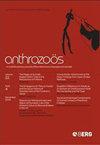海豚辅助治疗重度残疾儿童的长期疗效
IF 2.3
2区 农林科学
Q2 SOCIOLOGY
引用次数: 66
摘要
摘要采用15项封闭式比例量表家长问卷(n=71),对海豚辅助治疗的长期疗效进行分析。来自八个国家的多种病因的严重残疾儿童在多学科行为矫正项目中接受了一到两周的治疗。结果对三个临床问题进行了分析。首先,即使在离开治疗12个月后,儿童仍能保持或提高在治疗中获得的技能,比例约为50%。其次,由于三种病因(遗传、脑损伤、未知原因)的差异,长期影响没有差异(方差分析,F(2,39)=2.79, p < 0.05)。第三,两周治疗的远期效果明显优于一周治疗(t=3.105, df=28, p<0.01)。本文章由计算机程序翻译,如有差异,请以英文原文为准。
Long-Term Effectiveness of Dolphin-Assisted Therapy for Children with Severe Disabilities
ABSTRACTLong-term effectiveness of dolphin assisted therapy, as practiced by Dolphin Human Therapy, was analyzed via a 15 item closed form, ratio scale parent questionnaire (n=71). Children with severe disabilities of many etiologies, from eight countries, received either one or two weeks of therapy in the multidisciplinary, behavior modification program. Results on three clinical issues were analyzed. First, children maintained or improved skills acquired in therapy about 50% of the time even after 12 months away from therapy. Second, no difference in long-term effects occurred as a function of differences in three categories (genetic, brain damage, unknown causes) of etiology (ANOVA, F(2,39)=2.79, p>0.05). Third, two weeks of therapy produced significantly better long-term results than did one week of therapy (t=3.105, df=28, p<0.01).
求助全文
通过发布文献求助,成功后即可免费获取论文全文。
去求助
来源期刊

Anthrozoos
农林科学-兽医学
CiteScore
3.40
自引率
18.80%
发文量
43
审稿时长
>36 weeks
期刊介绍:
A vital forum for academic dialogue on human-animal relations, Anthrozoös is a quarterly, peer-reviewed journal that has enjoyed a distinguished history as a pioneer in the field since its launch in 1987. The key premise of Anthrozoös is to address the characteristics and consequences of interactions and relationships between people and non-human animals across areas as varied as anthropology, ethology, medicine, psychology, veterinary medicine and zoology. Articles therefore cover the full range of human–animal relations, from their treatment in the arts and humanities, through to behavioral, biological, social and health sciences.
 求助内容:
求助内容: 应助结果提醒方式:
应助结果提醒方式:


